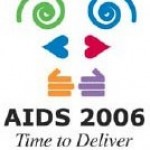Final data from a 48-week study comparing Norvir® (ritonavir)-boosted Lexiva® (fosamprenavir) to Kaletra®(ritonavir-boosted lopinavir) reported today at the XVI InternationalAIDS Conference (IAC) in Toronto indicate that these two proteaseinhibitor (PI) options have comparable safety and effectiveness. Theresults, which were also published in the August 5th issue of The Lancet,suggest that Norvir-boosted Lexiva may soon share the stage withKaletra as a “preferred” PI option for HIV-positive people startingtreatment for the first time.
The KLEAN study involved878 HIV-positive patients in the United States, Europe, and Canada. Allpatients enrolled in the study would be starting HIV treatment for thefirst time. The results of the study were reported at IAC by Joe Eron,MD, of the University of North Carolina, Chapel Hill.
Thepatients were randomly assigned to take one 700mg Lexiva tablet plusone 100mg Norvir capsule or three Kaletra capsules (Kaletra capsuleshave now been replaced by a tablet formulation and only requires twopills per dose). Both Norvir-boosted Lexiva and Kaletra were takentwice a day. All patients also took an Epzicom®tablet (600mg abacavir plus 300mg lamivudine) once a day. A total of434 patients were in the Lexiva group; 444 patients were in the Kaletragroup.
The primary goal of the study was to determine the percentage of patients in each group with viral loads below 400. The researchers also looked at the percentage of patients with viral loads below 50, along with changes in CD4 cell counts (T cell counts) and side effects.
Uponentering the study, patients had relatively high viral loads, with themajority (54%) starting treatment with viral loads above 100,000. TheCD4 cell count was relatively low, with a study entry CD4 count averageof 192 (17% had a CD4 count below 50).
Approximately77% of the patients completed 48 weeks of study treatment, with 12%discontinuing due to side effects in the Lexiva group and 10%discontinuing due to side effects in the Kaletra group.
After48 weeks of treatment, 73% of patients in the Lexiva group had viralloads below 400, compared to 71% in the Kaletra group. There was nostatistically significant difference between the two groups, meaningthat the slight difference wasn’t due to chance. Additionally, 66% ofpatients in the Lexiva group and 65% of the patients in the Kaletragroup had viral loads below 50.
Also of note, patientsin the Lexiva group had viral load responses comparable to those in theKaletra group, regardless of their pre-treatment viral loads.Reductions in viral load, to below 400, were similar among patients whostarted treatment with viral loads below 100,000 and above 100,000,with no differences between the two treatment groups.
Asfor immune recovery, CD4 cell counts increased by 176 in the Lexivagroup after 48 weeks of treatment, compared to a 191 cell gain in theKaletra group. Again, there were no statistically significantdifferences between the two groups.
In terms of side effects, diarrhea was the most common and was seen in 13% of patients in the Lexiva group and 11% in the Kaletra group. Nauseawas seen in 6% and 5%, respectively, and hypersensitivity reaction tothe abacavir in Epzicom was seen in 6% of patients in the Lexiva groupand 4% of patients in the Kaletra group. Cholesterol and triglyceride increases, seen in 8% to 11% of patients, were also similar in both treatment groups.
Basedon these results, demonstrating comparability between Norvir-boostedLexiva and Kaletra in terms of safety and effectiveness amongHIV-positive people starting therapy for the first time, it is possiblethat Norvir-boosted Lexiva will be promoted to a “preferred” first-lineprotease inhibitor option for those new to treatment.
TheInternational AIDS Society-USA (IAS-USA) currently recommends a handfulof Norvir-boosted protease inhibitor regimens for patients startingtherapy for the first time, notably Lexiva, Invirase® (saquinavir), and Reyataz® (atazanavir) boosted with low-dose Norvir, as well as Kaletra.
Healthcareproviders in the United States, however, appear to be more drawn toguidelines maintained by the U.S. Department of Health and HumanServices (DHHS). The DHHS Guidelines for the Use of Antiretroviral Agents in HIV-1-Infected Adultsare more conservative with their recommendations than IAS-USA, listingonly Kaletra as the preferred PI for first-line therapy.
Whilethe results of KLEAN suggest that Norvir-boosted Lexiva packs similarpotency and safety as Kaletra as first-line therapy – indeed, it is theonly clinical trial completed to date to show comparable resultsbetween Kaletra and another Norvir-boosted PI – it is not yet clear ifthis will result in Norvir-boosted Lexiva being put on equal footingwith Kaletra in the eyes of the DHHS.
Advertisement
Advertisement
Advertisement





Comments
Comments